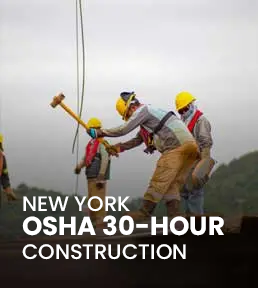Fire Watch Training Program
Practice Test
Fire Watch Training Program Quiz
Complete this quiz to earn an exclusive Certificate of Completion from OSHAOutreachCourses.com. Read all the questions carefully and mark the right answers to earn the perfect score. Best of luck!
Total Questions: 5
Why Workers Choose Us
| features |  |
other providers |
|---|---|---|
| Instant Downloadable Certificate | ||
Free Study Guide

|
||
Discounts For Businesses

|
||
| No Hidden Cost | ||
Mobile Compatibility

|
||
Flexible Learning

|
Satisfied Customers
Learning Objectives
- Understand the hazards presented by hot work.
- Describe where hot work is and is not permitted.
- Explain the role and responsibilities of a fire watcher.
- Recall the responsibilities of other individuals involved in hot work.
Course Outline
-
1. Introduction
- Welcome
- Introduction
- Learning Objectives
-
2. Definition and Standards
- What Is Hot Work?
- Hot Work Standards and Rules
- Knowledge Check: Examples of Hot Work
- Knowledge Check: Hot Work Rules
-
3. Hot Work Areas and Precautions
- Hot Work Areas
- Hot Work Precautions
- Knowledge Check: Safe Radius
- Knowledge Check: Fire Watcher
-
4. Responsibility for Hot Work
- Fire Watcher
- Monitoring
- Facility Management
- Permit-Authorizing Individual
- Hot Work Operator
- Emergency Actions
- Knowledge Check: Emergency Actions
-
5. Special Situations
- Confined Spaces
- Hazardous or Classified Locations
- Fire System Impairments and Rooftop Work
- Knowledge Check: Confined Spaces
- Knowledge Check: Impaired Fire System
-
6. Conclusion
- Conclusion
Group Discount for Corporate Accounts

VIDEO TESTIMONIAL
FAQ
Why is fire watch training required in the workplace?
Are there specific industries where this training is mandatory?
What is the fire watcher's salary?
Are there age restrictions for fire watch training?
What is the duration of the fire watch?
Can online fire watch training meet regulatory requirements?
What is OSHA fire watch requirements?
Job Aid Fire Watch Training Program PDF
Join our mailing list
Get announcements, industry updates and promotional offers.
17350 TX-249 Ste 220 19204, Houston, TX 77064, United States







